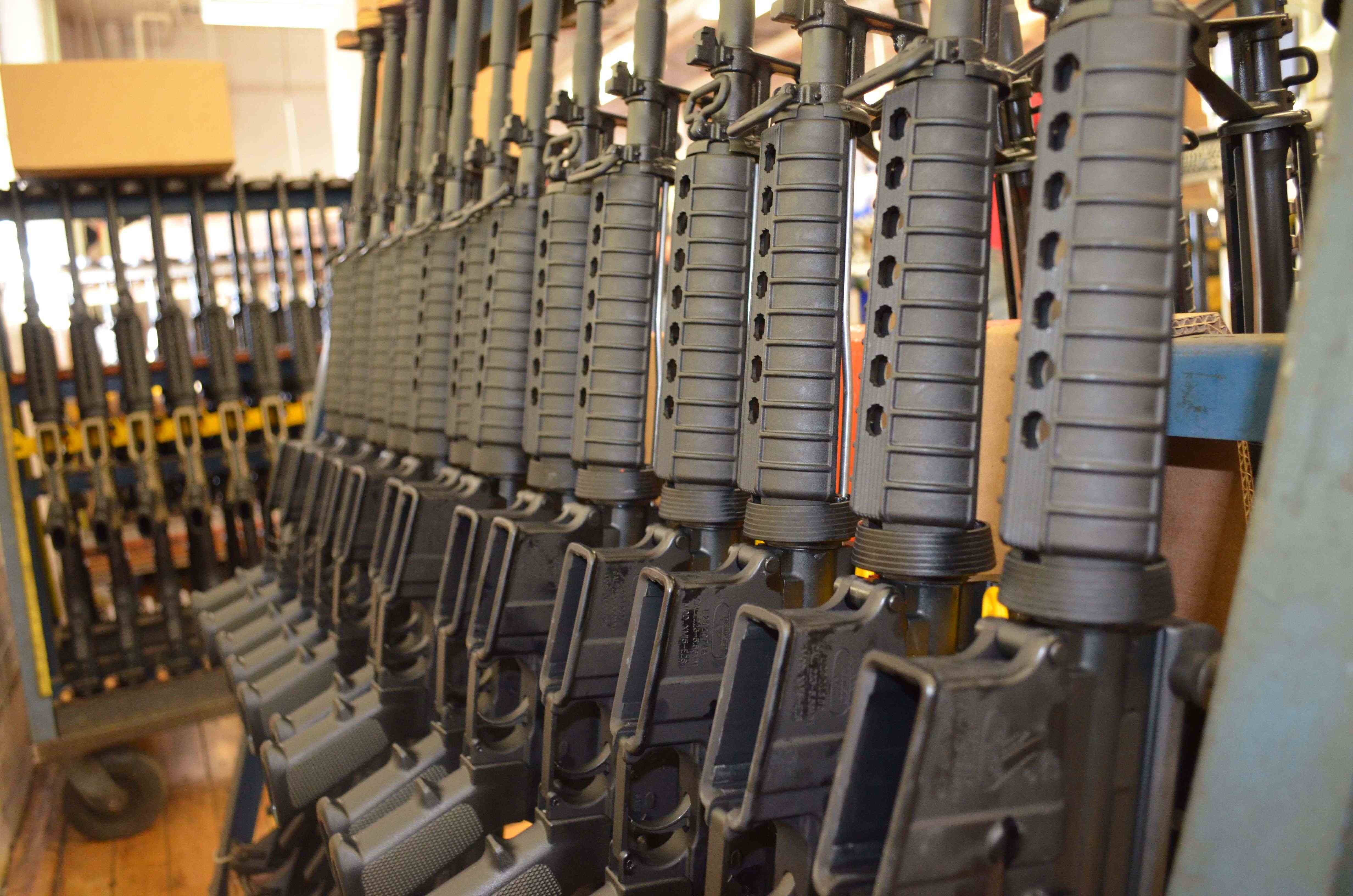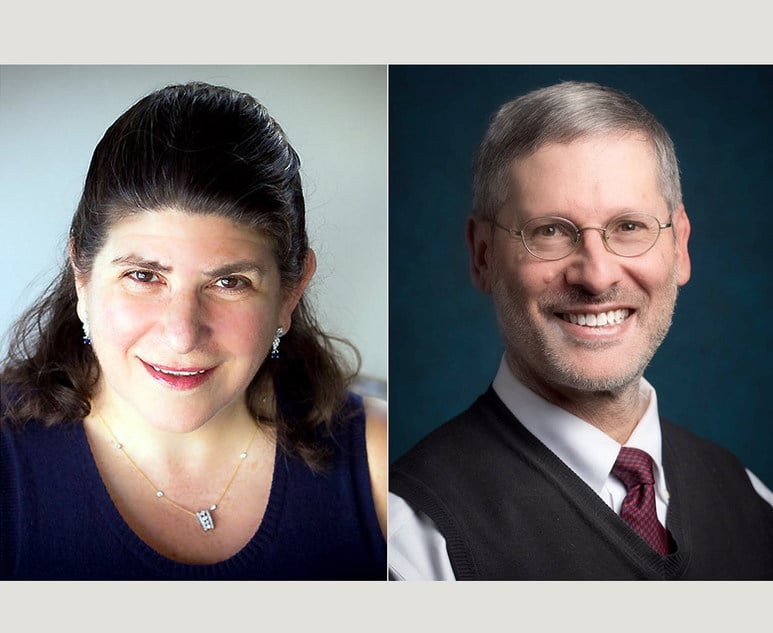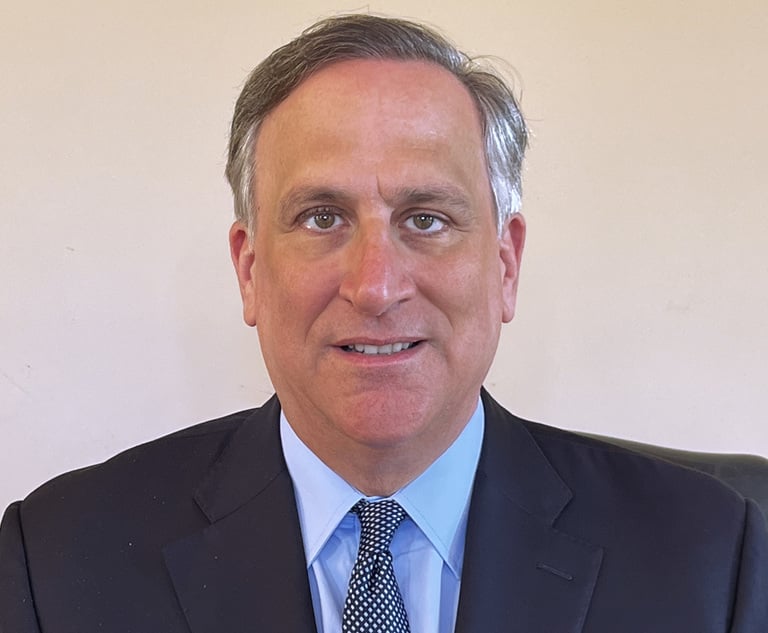Another Path to Safer Gun Legislation
We suggest “semi-automatic” guns not be banned, but regulated, just as machine guns and sawed–off shotguns have been for the last 80-plus years.
October 05, 2018 at 11:59 AM
3 minute read
 Bushmaster AR-15/courtesy photo
Bushmaster AR-15/courtesy photo
Feb. 14, 1929, began in Chicago like any other Valentine's Day holiday; men and women affirming their affection, a cold wind blowing through the city and the prospect of several more weeks of winter ahead. It ended with seven bootleggers cut down by Thompson submachine guns in the back of “Bugs” Moran's garage. Chicago was shocked and the county horrified. Over the next few years the likes of Bonny and Clyde, John Dillinger and Baby Faced Nelson all used machine guns to support careers of crime and murder. Machine guns were legal and easily obtained.
National outrage led to the National Firearms Act of 1934. The act regulated machine guns, sawed-off shotguns and several other kinds of firearms. It did not outlaw them, but tightly controlled the circumstances under which they could be possessed by private citizens. Among other things, it required an extensive background check that included submitting photographs and fingerprints and payment of a then-substantial registration fee. Its effect was not to eliminate machine guns or sawed-off shotguns, but it did limit their availability and use.
Today, we watch our children being massacred in schools and attacked at movie theaters and rock concerts, yet the country does nothing to regulate the weapons that have caused this seemingly ceaseless slaughter. We argue about the purpose and intent of the Second Amendment; a constitutional provision designed to protect the rights of law-abiding citizens, not the power of disturbed people intent only on bringing death and injury to the most innocent members of our society.
Powerful guns designed to hurl large amounts of ammunition at a target as quickly as a trigger can be pulled are bought and sold with little or no regulation; with less apparent regulation than we apply to pharmaceuticals or Volkswagens. Demands to ban “assault rifles” miss the point; are futile and impractical. In the first place, defining an “assault rifle” is much like defining pornography or holding mercury in your hand. Precise definitions of the item lead to minute changes in manufacture that put the product outside the definitional scope. And the term “ban” runs right into the Second Amendment and triggers eschatological arguments about individual rights and government power.
We suggest another path. We suggest that Connecticut or the federal government focus not on impossible-to-define “assault rifles,” but on much more easily defined “semi-automatic” guns. We suggest that these weapons, whether long gun or pistol, not be banned, but regulated, just as machine guns and sawed–off shotguns have been for the last 80-plus years. Impose registration, deep background checks, hefty ownership taxes and requirements for demonstrated, thorough training and proficiency as conditions to ownership. Those who currently own such firearms could chose to register them under the new standards or turn them in to the authorities for an appropriate amount of compensation. We believe that such an approach would survive judicial examination under even the strict scrutiny test of constitutional law.
There can be no more fundamental government responsibility than protecting innocent lives, particularly the lives of our children. Regulation of semi-automatic firearms rather than prohibition and confiscation is an effective way to protect these interests and balance the rights of legitimate sportsmen and women who wish to continue to acquire and use these guns for target shooting or hunting.
This content has been archived. It is available through our partners, LexisNexis® and Bloomberg Law.
To view this content, please continue to their sites.
Not a Lexis Subscriber?
Subscribe Now
Not a Bloomberg Law Subscriber?
Subscribe Now
NOT FOR REPRINT
© 2025 ALM Global, LLC, All Rights Reserved. Request academic re-use from www.copyright.com. All other uses, submit a request to [email protected]. For more information visit Asset & Logo Licensing.
You Might Like
View All
ADVANCE Act Offers Conn. Opportunity to Enhance Carbon-Free Energy and Improve Reliability With Advanced Nuclear Technologies

Trending Stories
- 1'If the Job Is Better, You Get Better': Chief District Judge Discusses Overcoming Negative Perceptions
- 2It Was the Best of Times, It Was the Worst of Times
- 3Class Action Accusing Dave's Killer Bread of Mislabeling Protein Contents Cleared to Continue, Judge Rules
- 4SEC Files Lawsuit Against Elon Musk Over Untimely Twitter Ownership Disclosure
- 5Survey Finds Majority of Legal Professionals Still Intimidated by AI Despite Need to Streamline Mounting Caseloads
Who Got The Work
J. Brugh Lower of Gibbons has entered an appearance for industrial equipment supplier Devco Corporation in a pending trademark infringement lawsuit. The suit, accusing the defendant of selling knock-off Graco products, was filed Dec. 18 in New Jersey District Court by Rivkin Radler on behalf of Graco Inc. and Graco Minnesota. The case, assigned to U.S. District Judge Zahid N. Quraishi, is 3:24-cv-11294, Graco Inc. et al v. Devco Corporation.
Who Got The Work
Rebecca Maller-Stein and Kent A. Yalowitz of Arnold & Porter Kaye Scholer have entered their appearances for Hanaco Venture Capital and its executives, Lior Prosor and David Frankel, in a pending securities lawsuit. The action, filed on Dec. 24 in New York Southern District Court by Zell, Aron & Co. on behalf of Goldeneye Advisors, accuses the defendants of negligently and fraudulently managing the plaintiff's $1 million investment. The case, assigned to U.S. District Judge Vernon S. Broderick, is 1:24-cv-09918, Goldeneye Advisors, LLC v. Hanaco Venture Capital, Ltd. et al.
Who Got The Work
Attorneys from A&O Shearman has stepped in as defense counsel for Toronto-Dominion Bank and other defendants in a pending securities class action. The suit, filed Dec. 11 in New York Southern District Court by Bleichmar Fonti & Auld, accuses the defendants of concealing the bank's 'pervasive' deficiencies in regards to its compliance with the Bank Secrecy Act and the quality of its anti-money laundering controls. The case, assigned to U.S. District Judge Arun Subramanian, is 1:24-cv-09445, Gonzalez v. The Toronto-Dominion Bank et al.
Who Got The Work
Crown Castle International, a Pennsylvania company providing shared communications infrastructure, has turned to Luke D. Wolf of Gordon Rees Scully Mansukhani to fend off a pending breach-of-contract lawsuit. The court action, filed Nov. 25 in Michigan Eastern District Court by Hooper Hathaway PC on behalf of The Town Residences LLC, accuses Crown Castle of failing to transfer approximately $30,000 in utility payments from T-Mobile in breach of a roof-top lease and assignment agreement. The case, assigned to U.S. District Judge Susan K. Declercq, is 2:24-cv-13131, The Town Residences LLC v. T-Mobile US, Inc. et al.
Who Got The Work
Wilfred P. Coronato and Daniel M. Schwartz of McCarter & English have stepped in as defense counsel to Electrolux Home Products Inc. in a pending product liability lawsuit. The court action, filed Nov. 26 in New York Eastern District Court by Poulos Lopiccolo PC and Nagel Rice LLP on behalf of David Stern, alleges that the defendant's refrigerators’ drawers and shelving repeatedly break and fall apart within months after purchase. The case, assigned to U.S. District Judge Joan M. Azrack, is 2:24-cv-08204, Stern v. Electrolux Home Products, Inc.
Featured Firms
Law Offices of Gary Martin Hays & Associates, P.C.
(470) 294-1674
Law Offices of Mark E. Salomone
(857) 444-6468
Smith & Hassler
(713) 739-1250












